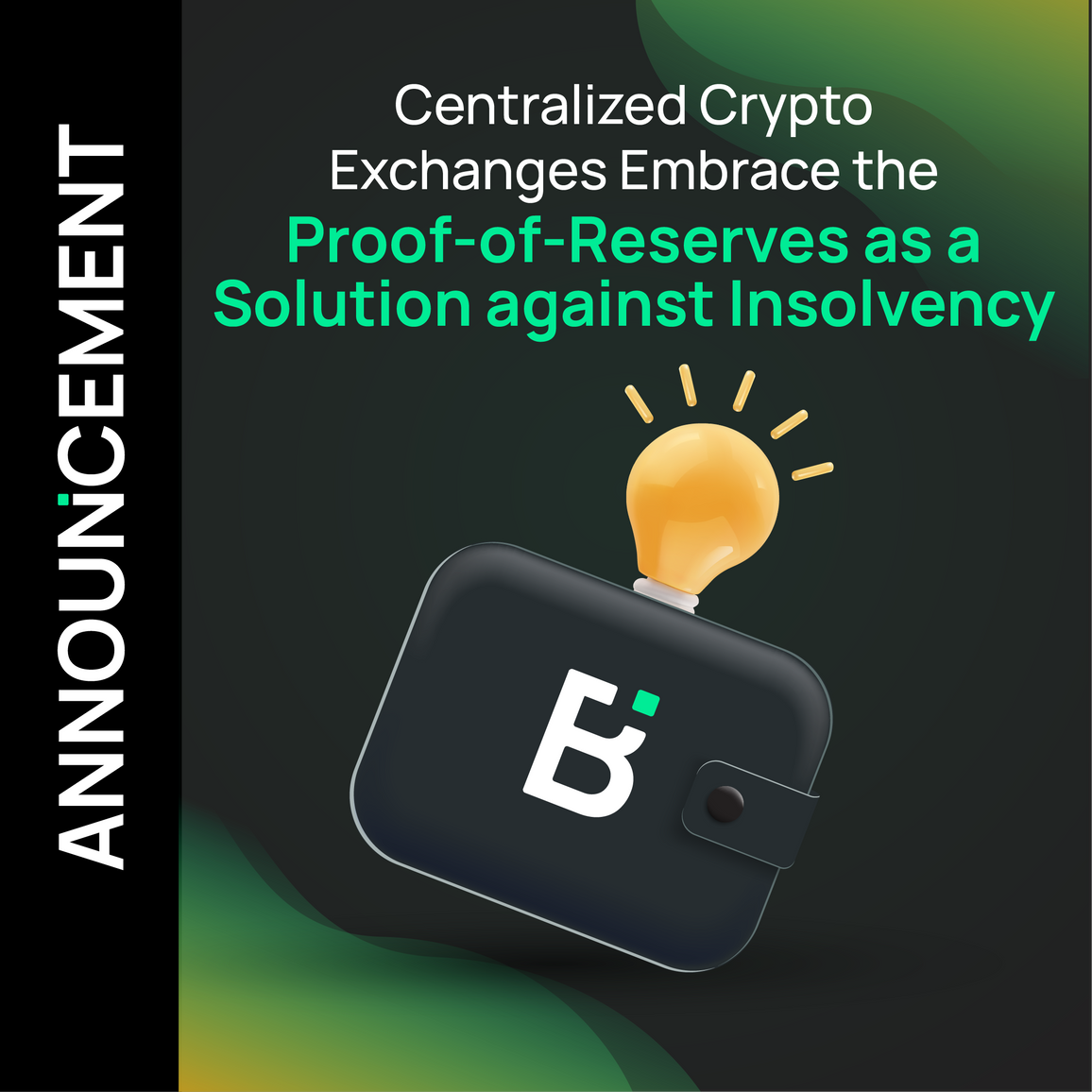Centralized Crypto Exchanges Embrace the Proof-of-Reserves as a Solution against Insolvency

The need for transparency in assets and liability of crypto exchanges has become increasingly important following the FTX crisis. More users are moving their assets from crypto exchange platforms to cold storage wallets for fear of misuse. It has become even more expedient for exchanges to find solutions to avoid losing customers.
Currently, the number of exchanges that might face financial crises due to stuck assets on FTX has increased. On November 12, the Financial Times reported that Galois Capital might have up to $50 million worth of assets stuck on FTX.
Huobi’s Subsidiary Hbit also said it failed to withdraw $18.1 million worth of assets from FTX before withdrawals were frozen.
Proof-of-Reserves as Solutions to Improve Transparency in CEXs
The major factor contributing to the FTX insolvency issue is the misuse of users’ assets due to a lack of transparency in centralized exchanges. As suggested by Changpeng Zhao of Binance and Brain Armstrong of Coinbase, the solution to this problem is improved transparency and publicly audited financials.
The two CEOs advised centralized crypto exchanges (CEXs) to embrace proof-of-reserve and move on to decentralization.
As the cascade effects from the ongoing FTX crisis still ravage the industry, crypto exchanges are called to take action to mitigate further damage. The centralized crypto exchanges must evolve into transparent and reliable firms and contribute to the industry’s self-regulation. In line with this, BIT has devised a solution to mitigate insolvency. The crypto exchange published its solutions to proof of insolvency in an official announcement.
According to BIT, it is determined to contribute its quota towards implementing the crypto industry’s self-regulation. In its statement, BIT said it would publish Merkle Tree proof-of-reserves (POR) for its assets. Recall that Binance’s CEO earlier proposed that centralized exchanges conduct Merkle Tree Proof-of-reserves.
BIT’s Combination of PoR and PoL
In addition, BIT will also publish Merkle Tree proof-of-liabilities to validate its liabilities. The crypto exchange intends to combine proof-of-reserves and proof-of-liabilities for maximum client satisfaction and ensure the safety of assets.
Aside from the Merkle-proof-of-reserves and liabilities, BIT also plans to acquire licenses in multiple jurisdictions. Furthermore, it consulted with many parties regarding its audits. BIT acknowledges that proof-of-reserves will be more transparent than the Cactus, Cobo, Copper, and other custodians it has been using.
While proof-of-reserves is a little simpler than proof-of-liability, BIT wants to combine both for added advantage. Like asset verifications, proof-of-liability might require an exchange to publish all liabilities, including creditors’ names and balance sheets. This might be the highest point of transparency any exchange can possibly pursue.
BIT also listed the strategies through which it would achieve the set goals. Firstly, it would employ several models to record liabilities accurately. Secondly, BIT intends to add liability-proof attributions in the user system to support the validation. It would also develop snapshot tools for reserves and liabilities and create a suite of tools for the generation and validation of proof-of-reserves and proof-of-liabilities.
Being a responsible exchange, BIT believes that privacy, security, and transparency are the keys to building a safe space for users.

